Manufacturer, Supplier & Exporter of
a wide range of Dyes, Pigments & Food Colours
Reactive Dyes
Before going further let us first understand what is reactive dyes?
Reactive dyes are extremely coloured organic substances that are utilized for colouring textiles. The word ‘reactive’ itself refers to the chemical reaction that takes place when a reactive dye is applied to fibre. The particle of the dye formulates a covalent bond with the fibre – this is one of the toughest types of reactive dyes, and guarantees that the colouring is long-lasting. Unlike other dyestuffs that adhere to the material by absorption, fibre reactive dyes have a strong attachment and are hardly ever removed by washing.
The reactive dyes in textile constitute the most frequently used class of dyes for dyeing cellulosic textiles. Because of the decent versatile reactive dyes properties, such as ease of application, water solubility, variety of application techniques, availability of diverse shades, brightness of colour shades, good to excellent wash, light retreat and reasonable price.
Reactive dye usage is pretty popular in the textile printing industry and takes part in printing on nylon, cotton, wool, silk, blended, and many other fabrics. Properties of reactive dyes offer a cost-efficient, simple dyeing procedure and useful applications with an extensive range of colours and vibrant shades. The current applications of reactive dye include continuous and semi-continuous dyeing, exhaust dyeing, inkjet printing, direct printing, discharge printing, resist printing, and more.
To find the right Reactive dye and dyeing procedure for your business, we invite you to explore one of the best Reactive Dyes Manufacturers in India i.e. Megha International. We offer a diverse collection of reactive dyes and consumables that cater to various requirements. Moreover, we keep pace with the advancements in digital textile printing techniques to ensure that our customers have access to the latest technologies. For detailed information on the product Download Reactive Dyes PDF
Are you looking for Reactive Dyes? Transform your materials into vibrant masterpieces!
Buy High quality Reactive Dyes at Best Price - Megha International
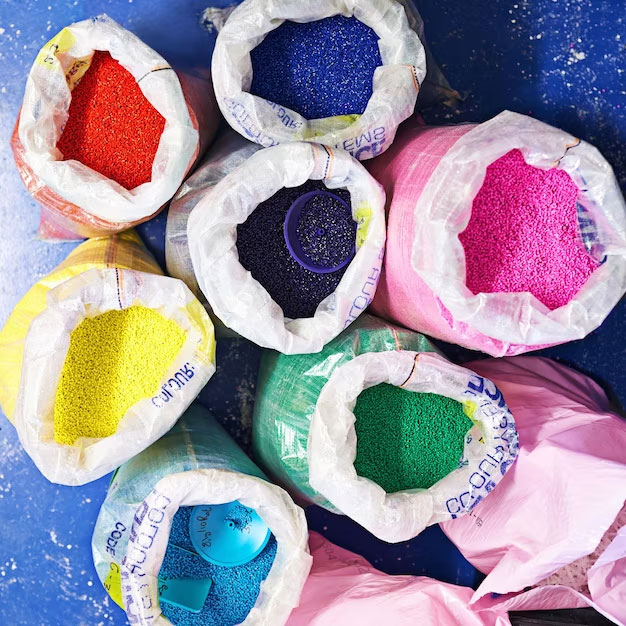
Reactive Dyes Manufacturing Process
The manufacturing process for reactive dyes involves the following steps:
The first step in the reactive dyes process is synthesizing the dye in a laboratory using various chemicals and reagents. The resulting product is then purified and tested to ensure its quality meets the required specifications.
The synthesized dye is then made into a liquid form, which is mixed with other chemicals to create a dye solution. The solution is then tested and adjusted to ensure its consistency and colourfastness properties are optimal.
Once the dye solution is ready, it is applied to the fabric through various dyeing techniques such as exhaust, pad batch, or continuous methods. The choice of dyeing technique depends on the fabric type, the desired colour, and other factors.
After dyeing, the fabric is washed and treated to remove excess dye and improve its colourfastness properties. The treatment involves rinsing the fabric in water, treating it with an alkali solution, and then washing it again.
After treatment, the fabric is dried and inspected to ensure that it meets the required quality standards. The inspection involves checking the colour, shade, and colourfastness properties of the fabric.
Finally, the fabric is packaged for shipment. The packaging process involves folding the fabric neatly, labelling it, and packing it in a manner that ensures it does not get damaged during transit.
Types of Reactive Dyes
Reactive dyes classification depends upon their properties and then they are used in different applications accordingly. Let us understand them in detail.
Cold Brand Reactive Dyes
The cold brand dyes are formulated with a reactive system based on “Dichloro Triazine.” These dyes are highly reactive and are usually applied at a temperature of around 40°C. They are suitable for dyeing cellulose materials using various dyeing methods, such as exhaust, pad batch, pad dry steam, and pad dry thermofix.
Types of Reactive Dyes (Cold Brand Dyes Shade Card): – Megha International
| Cold Brand Dyes | |||
| 2% | Product Name | C. I. Name | CAS NO. |
| Yellow M4G | Yellow 22 | 12226-49-2 | |
| Yellow M8G | Yellow 80 | 61951-86-8 | |
| Yellow M4R | Orange 14 | 12225-86-4 | |
| Orange M2R | Orange 4 | 12225-82-0 | |
| Red M5B | Red 2 | 12226-03-8 | |
| Red M8B | Red 11 | 12226-08-3 | |
| Blue MR | Blue 181 | 13324-20-4 | |
| Magenta MB | VIOLET 13 | 12270-87-0 | |
| Turq. Blue MG | Blue 140 | N/A | |
| Blue M2R | Blue 81 | N/A | |
| Blue M4GD | Blue 168 | 72847-57-5 | |
| Yellow MGR | Yellow 7 | 12226-46-9 | |
| Golden Yellow MR | Yellow 44 | 12270-91-6 | |
| Yellow M3R | Orange 86 | 83929-91-3 | |
| Orange MG | Orange 1 | 6522-74-3 | |
| Pink MB | Red 74 | 12270-82-5 | |
| Violet C4R | Violet 12 | NA | |
| Violet C3R | NA | NA | |
| Violet 2BNH | NA | NA | |
| N.Blue M3R | Blue-9 | 12225-37-5 | |
Hot Brand Reactive Dyes
Hot brand dyes are a type of dye that uses a “Monochloro Triazine” reactive system to bond with fibers during the dyeing process. They are applied at high temperatures, typically above 60°C, and are suitable for dyeing cellulosic materials such as cotton, rayon, and linen. The hot brand reactive dyes are known for their high colour fastness, brightness, and excellent wash-fastness. They are commonly used in the textile industry for dyeing fabrics and garments.
Types of Reactive Dyes (Hot Brand Dyes Shade Card): – Megha International
| Hot Brand Dyes | |||||
| 2% Print | Product Name | C. I. Name | CAS NO. | ||
| Yellow H4G | Yellow 18 | 12226-48-1 | |||
| Yellow H8G | Yellow 85 | 71872-81-6 | |||
| G.Yellow HR | Orange 12 | 35642-64-9 | |||
| Orange H2R | Orange 13 | 12225-85-3 | |||
| Red H8B | Red 31 | 12237-00-2 | |||
| Turquoise Blue HA | Blue 71 | 12677-15-5 | |||
| Turquoise Blue H5G | Blue 25 | 12236-87-2 | |||
| Red Brown H4R | Brown 9 | 12225-66-0 | |||
| Blue H5R | Blue 13 | 12236-84-9 | |||
| Navy Blue HR | Blue 59 | 12270-71-2 | |||
| Black HN | Black 8 | 12225-26-2 | |||
| Black G | Black 1 | 6428-31-5 | |||
| Yellow P6G | Yellow 85 | 12226-63-0 | |||
| Yellow P2RN | Yellow 181 | NA | |||
| Red 6BX | Red 76 | NA | |||
| Red PBN | Red 24 | 70210-20-7 | |||
| Red H2B | Red 45 | 31778-10-6 | |||
| Red P6B | Red 218 | 113653-03-5 | |||
| Red P4B | Red 245 | 70210-46-7 | |||
| Megenta HB | Violet 26 | NA | |||
| Blue P3R | Blue 49 | 12236-92-9882 | |||
| Blue P2RN | Black 39 | 68259-02-9 | |||
| Blue HGR | Blue 5 | 16823-51-1 | |||
| Blue H5G | Blue 25 | 12236-87-2 | |||
| Black PGR | NA | NA | |||
HE Dyes
These dyes mostly referred to as HE dyes are fit for cellulosic materials and dyeing cotton. Highly Exhausted Dyes possess considerably higher fixation and exhaustion efficiency, which results in high reduction in cost, when compared to conventional reactive dyes. Good build up and high fixation is of precise importance when dyeing cellulosic blends/polyester. The exhaustion of these dyes can be controlled with particular temperature and salt addition in order to give level dyeing, before Alkali is added.
Types of Reactive Dyes (Highly Exhausted Dyes Shade Card): – Megha International
| HE Dyes | ||||
| 2% | Product Name | C. I. Name | CAS NO. | |
| Yellow HE6G | Yellow 135 | 77907-38-1 | ||
| Yellow HE46 | Yellow 81 | 2783-94-0 | ||
| Orange HER | Orange 84 | 91261-29-9 | ||
| Orange HE2R | Orange 86 | 57359-00-9 | ||
| Red HE3B | Red 120 | 61951-82-4 | ||
| Red HE7B | Red 141 | 61931–52–0 | ||
| Red HE8B | Red 152 | 71870-80-5 | ||
| Green HE480 | Green 19 | 61931-49-5 | ||
| Turquoise Blue HA | Blue 71A | 7220-79-3 | ||
| Blue HERD | Blue 160 | 71872-76-9 | H | |
| Navy Blue HER | Blue 171 | 77907-32-5 | ||
| Black HEBL | Black 5 | NA | ||
| Reactive Red BS | Red 69 | NA | ||
| Reactive Red DS4B | Red 180 | NA | ||
| Reactive Red W3R | Red 180 | NA | ||
| Reactive Deep Red CD | Red 194 | NA | ||
| Reactive Deep Red SB | Red 239 | NA | ||
| Reactive Yellow RGB | Yellow 145 | NA | ||
| Reactive Red RGB | Red 195 | NA | ||
| Reactive Blue RGB | Blue 19 | NA | ||
| Reactive Navy RGB | Blue 172 | NA | H | |
| Reactive Orange W3R | Orange 84 | NA | ||
| Reactive Orange CD/GDR | Orange 122 | NA | ||
| Reactive Brown GR | Brown 18 | NA | ||
| Reactive Red Violet ME | Red 195 | NA | ||
| Reactive Red 111 | Red 111 | NA | ||
Bifunctional Reactive Dyes
Bi Functional ME Series Dyes are pure in composition, having great fixation efficiency and pose no danger of staining the neighbouring white patches. The Bifunctional Reactive Dyes are formed by linking Vinyl Sulfonyl group to chromophore through a bond link of monochloro triazine group. This type of dye is used on cellulosic materials at a low dyeing temperature of 60°C.
Types of Reactive Dyes (Bifunctional Dyes Shade Card): – Megha International
| Bifunctional reactive Dyes | |||
| 2% | Product Name | C. I. Name | CAS NO. |
| Yellow ME7GL | Yellow 185 | 72908-36-6 | |
| Yellow ME4GL | Yellow 160 A | 61979-33-5 | |
| Golden Yellow MERL | Yellow 145 A | 93050-80-7 | |
| Orange ME2RL | Orange 122 | 12220-12-1 | |
| Red ME2G | Red 222 | 3734-67-6 | |
| Red ME3BL | Red 194 | 23354-52-1 | |
| Red ME4BL | Red 195 A | NA | |
| Red ME6BL | Red 196 | NA | |
| Red 3GF | Red 223 | 93051-43-5 | |
| Blue BRF | Blue 221 | 93051-41-3 | |
| Navy Blue ME2GL | Blue 194 | 93050-78-3 | |
| Navy Blue MEBF | Blue 222 | 93051-44-6 | |
| Red MERBL | Red 198 | 145017-98-7 | |
| Red ME3BN | Red 180 | 72828-03-6 | |
| Red ME3GL | Red 223 | NA | |
| Blue ME2RL | Blue 248 | NA | |
| Black MEGR | NA | NA | |
| Black HFGR | NA | 2580-78-0 | |
Vinyl Sulfone Dyes
Vinyl Sulphone Brand Dyes utilize a reactive system based on “Vinyl Sulphone Ester.” These dyes are suitable for dyeing cotton and other cellulose-based materials using exhaust, batch wise, continuous, and thermolixation processes. Vinyl Sulfone Dyes are suitable for printing using one or two-phase application methods. The dyes have an excellent white effect on dyed grounds and can be used with discharge and resist printing methods. Moreover, they have easy wash-off properties and do not stain as the hydrolyzed dye does not have an affinity for the substrate.
Types of Reactive Dyes (Vinyl sulphone Dyes Shade Card): – Megha International
| VS reactive Dyes | ||||
| Dyeing 2% | Printing 2% | Product Name | C. I. Name | CAS NO. |
| Yellow GR | Yellow 15 | NA | ||
| Golden Yellow G | Yellow 17 | 20317-19-5 | ||
| Yellow GN | Yellow 23 | NA | ||
| Yellow GL | Yellow 37 | 633-03-4 | ||
| Yellow FG | Yellow 42 | 6375-55-9 | ||
| Yellow 4G | Yellow 160 | NA | ||
| Golden Yellow RNL | Orange 107 | 12220-08-5 | ||
| Orange 3R | Orange 16 | 730-40-5 | ||
| Orange 2R | Orange 7 | 42986-20-1 | ||
| Red 5B | Red 35 | 522-75-8 | ||
| Red C2G | Red 106 | 105635-66-3 | ||
| Turquoise Blue G | Blue 21 | 12236-86-1 | ||
| Dark blue HR | Blue 89 | 2538-85-4 | ||
| Navy blue GG | Blue 203 | 118685-33-9 | ||
| Blue BB | Blue 220 | 90341-71-2 | ||
| Navy blue RGB | Blue 250 | 6104-59-2 | ||
| Brown GR | Brown 18 | 12225-73-9 | ||
| Violet 5R] | Violet 5 | 2390-56-9 | ||
| Black B | Black 5 | 4197-25-5 | ||
| Black HFGR | NA | 2580-78-0 | ||
| Black WNM | NA | NA | ||
To know more in details about the classification of Reactive Dyes
Reactive Dyes Properties
- Reactive dyes are anionic dyes that are used for dyeing cellulose, protein and polyamide fibres.
- During dyeing the reactive group of this dye forms covalent bond with fibre polymer and becomes an essential part of the fibre.
- Reactive dyes are soluble in water and are found in liquid, power and print paste form.
- Textile materials dyed with reactive dyes have a decent wash fastness with rating about 4-5 due to robust covalent bonds formed between fibre polymer and reactive group of dye.
- Reactive dyes have an extremely good light fastness with rating about 6. The dyes have very stable electron prearrangement and can protect the degrading effect of ultraviolet rays.
- Reactive dye gives brighter shades and has reasonable rubbing fastness.
- Dyeing method of reactive dyes is simple and easy. It needs less time and low temperature for dyeing.
- Reactive dyes are comparatively cheap and have good perspiration fastness with rating 4-5.
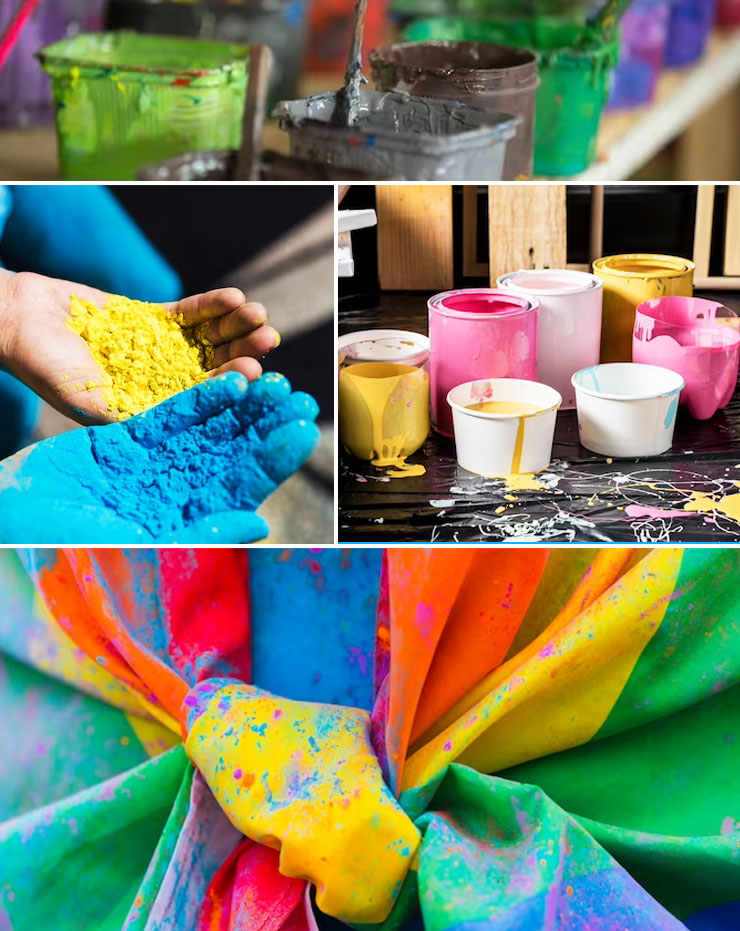
Advantages of Reactive Dyes
- Due to its ability to react with the medium gives a massive advantage to reactive dyes as they become much more long-lasting as well as visually different. This feature gives it a strong benefit over prohibited colours as well as cellulose colours.
- Reactive Dyes have another solid advantage that is its wet speed, attained through an effective and straightforward colouring procedure.
- The fibres that are dyed with reactive dyes can be safely dyed even with white garments without the risk of colouring it.
- Reactive dyes are appropriate for dyeing a new type of cellulose fibre products like Lyocellfibres.
Reactive Dyes Uses
Reactive dyes are primarily used for dyeing cellulose fibres such as viscose and cotton, but they are also progressively gaining significance for wool and polyamide. The wide range of available reactive dyes is extensive and allows a large number of dyeing techniques to be used.
Some of the common reactive dyes examples include:
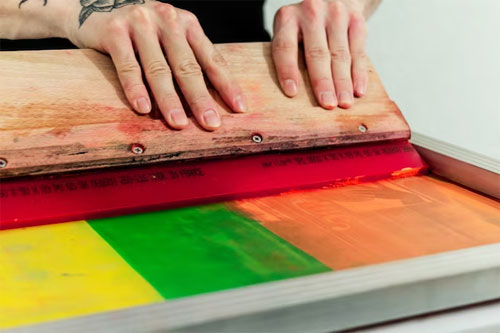
Textile Colouring
Reactive dyes for cotton and other natural fibers are widely utilized in the textile industry for their colouring properties on fabrics such as cotton, wool, silk, and others. They are also used to dye synthetic fibers such as polyester, nylon, and acrylic.
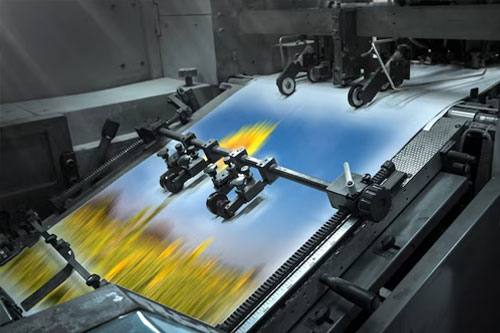
Printing
Reactive dyes can be used to print designs on fabrics using different printing techniques such as screen printing, roller printing, and inkjet printing.
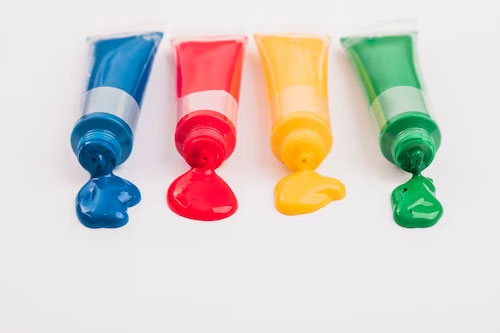
Paper Colouring
Reactive dyes are also used to colour paper and paper products. They are used in the production of paper for books, magazines, and other printed materials.
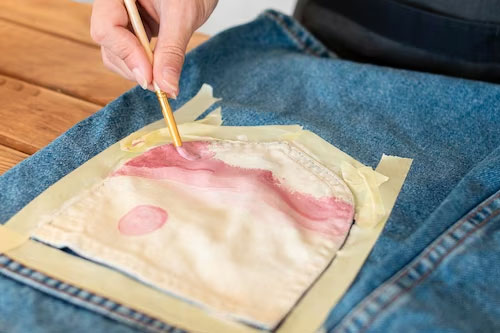
Leather Colouring
Reactive dyes are used to colour leather and leather products such as shoes, bags, and belts.
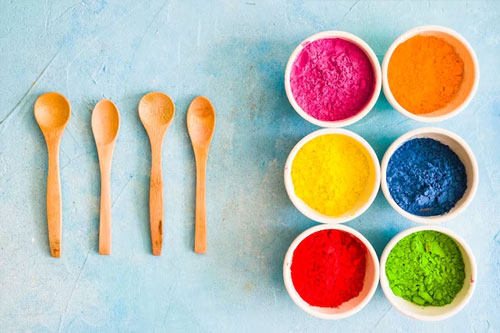
Food Colouring
Some reactive dyes are also used as food colouring agents, although their use in food is highly regulated and limited.
Overall, reactive dyes are versatile and widely used in various industries for their excellent colour fastness and durability.
About Megha International
Looking for a Reactive Dyes Exporter for brazil?
Megha International (ISO 9001: 2008) Established in the year 1995, at Mumbai, India is the best reactive dyestuff manufacturer that offers an extensive range of dyes in national as well as international markets. Our research and development team carries out constant studies to develop products that reliably set us apart from our competitors and serve our clienteles best. With a remarkable focus on innovation and leveraging new-age expertise, we endeavour to sustain and develop a leading organization on a global scale. The company is a top reactive dyes manufacturer in India, and is striving to deliver the finest quality of products to the consumers, while being environmentally sensitive.
Market Area of Megha International
As a prominent reactive dyes supplier, Megha International is proud to export Reactive dyes in a wide range of countries across the globe. Our reach extends to many countries in Asia, including China, Vietnam, Singapore, Thailand, Malaysia, Korea, Philippines, Japan, and Indonesia.
We also serve clients in the Middle East, such as UAE, Saudi Arabia, Kuwait, Qatar, Iraq, and Iran.
In North Africa, we have clients in Algeria, Morocco, and Tunisia, while in Europe, we offer our services to Russia, the UK, France, Italy, Germany, the Netherlands, Romania, and Poland.
In South America, we serve clients in Brazil, Argentina, Colombia, Peru, and Guatemala, as well as in Central America, including Mexico, Costa Rica, and Honduras.
Finally, we also provide our services to clients in the United States and Chile. No matter where our clients are located, we are committed to delivering high-quality dyes and exceptional customer service.
Frequently Asked Question About Reactive Dyes
Reactive dye is chemically reacting with cellulose to formulate a covalent bond between cellulose and dye molecule.
If we are considering usages of reactive dyes, then definitely reactive dyes are eco-friendly.
Covalent bonds are used in reactive dyes to give very high fastness.
Reactive dyes are specifically designed for natural fibers such as cotton, wool, silk, and other cellulosic fibers. They can also be used to colour synthetic fibers such as polyester, nylon, and acrylic.
Reactive dyes offer excellent colour fastness and durability, which means the colour stays vibrant even after multiple washings. They also provide a wide range of colour options and can be used for both solid colouring and printing.
Some reactive dyes can be used as food colouring agents, but their use in food is highly regulated and limited.
Reactive dyes can be used for dyeing and printing fabrics through various techniques such as immersion dyeing, direct application, and screen printing. The process involves preparing the dye solution, immersing or applying the fabric, and then fixing the dye through a chemical reaction or steam treatment.
Yes, it is important to follow proper safety precautions when handling reactive dyes. They can be harmful if ingested or inhaled and can cause skin irritation or allergic reactions. It is recommended to wear protective clothing, gloves, and a face mask while working with reactive dyes.
